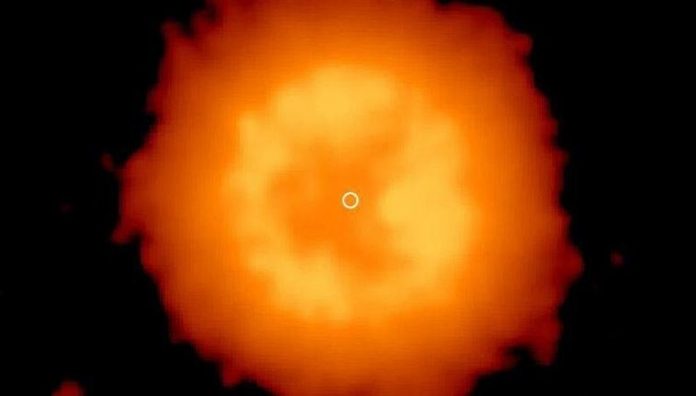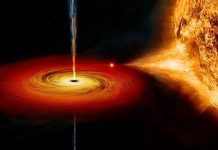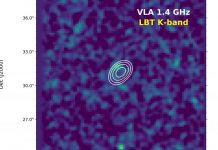
May 21 (UPI) — Astronomers have discovered a rare celestial object. Scientists suggest the fiery orb was created when two dead white dwarfs merged and become reanimated.
According to a new paper describing the unusual stellar object, published this week in the journal Nature, the orb is a ticking time bomb — likely to explode with a fiery bang in the near future.
Scientists first spotted the object while analyzing data collected by the Wide-field Infrared Survey Explorer, or WISE, satellite. Astronomers spotted a bright star at the center of a gas nebula, but were surprised to find no visible light, only infrared radiation, emanating from the nebula.
When astronomers analyzed the spectrum emitted by the nebula and its central star, they determined the object contained neither hydrogen nor helium. The absence of hydrogen and helium is a defining characteristic of white dwarfs.
The sun and sun-like stars are powered by hydrogen fusion. When sun-like stars run out of hydrogen to burn, they burn helium, and when they run out of helium, they cool down and become white dwarfs. Unable to generate the temperatures to burn heavier elements, the stars die.
But for the pair of white dwarfs in the J005311 nebula, there is life after death.
“We assume that two white dwarfs formed there in close proximity many billions of years ago,” Norbert Langer, a professor at the Argelander Institute for Astronomy at the University of Bonn in Germany, said in a news release. “They circled around each other, creating exotic distortions of space-time, called gravitational waves.”
Eventually, the stars lost energy and their orbits inched closer and closer together. Finally, the pair merged. Miraculously, their merger gave the joined stars enough mass to burn heavier elements, granting the stellar object new life.
“Such an event is extremely rare,” said Götz Gräfener, researcher at the Argelander Institute for Astronomy. “There are probably not even half a dozen such objects in the Milky Way, and we have discovered one of them.”
Simulations showed the strong stellar winds measured around the unusual star can be explained by the object’s fusion and rotating magnetic field. But as the white dwarfs that formed it once died, so too will the new object.
As it runs out of material, it will collapse under the weight of its tremendous mass and strong gravitational pull, and the star’s final death will be marked by a large supernova explosion, researchers say.





